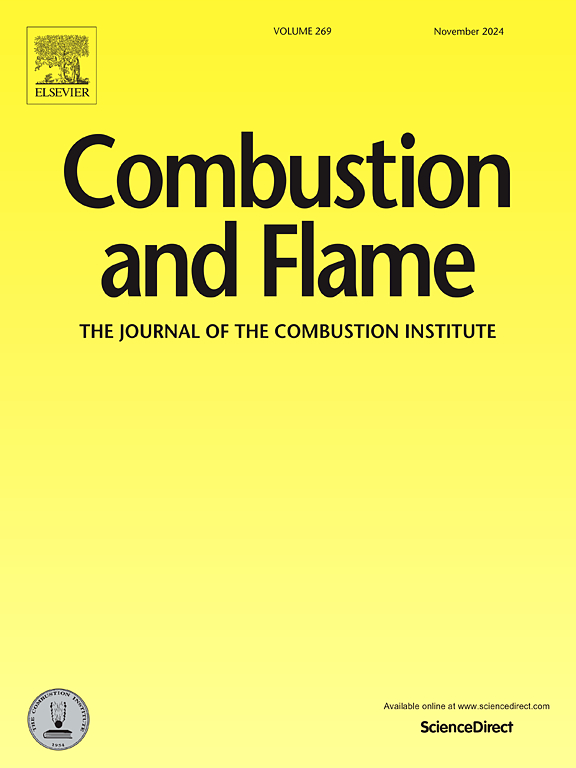Experimental and fuel-surrogates modeling study of the oxidation of specialty cetane number fuels
IF 5.8
2区 工程技术
Q2 ENERGY & FUELS
引用次数: 0
Abstract
Single pulse shock tube experiments were performed at 50 atm nominal pressure and 4 milliseconds nominal reaction time over a temperature range of 900–1800 K, to study the oxidation speciation of a multicomponent jet fuel, F-24, and six cetane number (CN) specialty fuels - CN30, CN35, CN40, CN45, CN50, and CN55. The oxidation experiments were carried out at an equivalence ratio of approximately 1.0. Gas chromatography (GC) was used to quantitatively and qualitatively analyze the post shock gases. The correlation between the formation of critical oxidation species and the chemically controlled combustion propensity as reflected by the cetane number of each fuel was investigated. The species were simulated using a surrogate-based mechanism from the CRECK Modelling Group. The species produced from the oxidation of the CN fuels were initially modeled using optimized chemical composition surrogates, but with less than satisfactory agreement. Efforts to enhance the agreement of experiment with model results by increasing the iso-paraffinic content in the surrogates did not yield significant improvements. Subsequently, the aromatic content of the surrogates was adjusted, resulting in surrogates whose model predicted oxidation species better matched the experimental data. Rate of production, sensitivity and reaction path analyses using the surrogate model were performed to obtain the important reactions responsible for the formation of key species and to examine the chemistry of complex multicomponent fuel systems. The primary reactions responsible for driving the oxidation chemistry were largely influenced by the chemical functional groups present in the fuels. In addition, the study highlights the effectiveness of the fuel-surrogate approach where surrogates representing the chemical functional group composition of the parent fuel serve as a valuable tool for predicting the combustion chemistry of unknown fuels.
求助全文
约1分钟内获得全文
求助全文
来源期刊

Combustion and Flame
工程技术-工程:化工
CiteScore
9.50
自引率
20.50%
发文量
631
审稿时长
3.8 months
期刊介绍:
The mission of the journal is to publish high quality work from experimental, theoretical, and computational investigations on the fundamentals of combustion phenomena and closely allied matters. While submissions in all pertinent areas are welcomed, past and recent focus of the journal has been on:
Development and validation of reaction kinetics, reduction of reaction mechanisms and modeling of combustion systems, including:
Conventional, alternative and surrogate fuels;
Pollutants;
Particulate and aerosol formation and abatement;
Heterogeneous processes.
Experimental, theoretical, and computational studies of laminar and turbulent combustion phenomena, including:
Premixed and non-premixed flames;
Ignition and extinction phenomena;
Flame propagation;
Flame structure;
Instabilities and swirl;
Flame spread;
Multi-phase reactants.
Advances in diagnostic and computational methods in combustion, including:
Measurement and simulation of scalar and vector properties;
Novel techniques;
State-of-the art applications.
Fundamental investigations of combustion technologies and systems, including:
Internal combustion engines;
Gas turbines;
Small- and large-scale stationary combustion and power generation;
Catalytic combustion;
Combustion synthesis;
Combustion under extreme conditions;
New concepts.
 求助内容:
求助内容: 应助结果提醒方式:
应助结果提醒方式:


